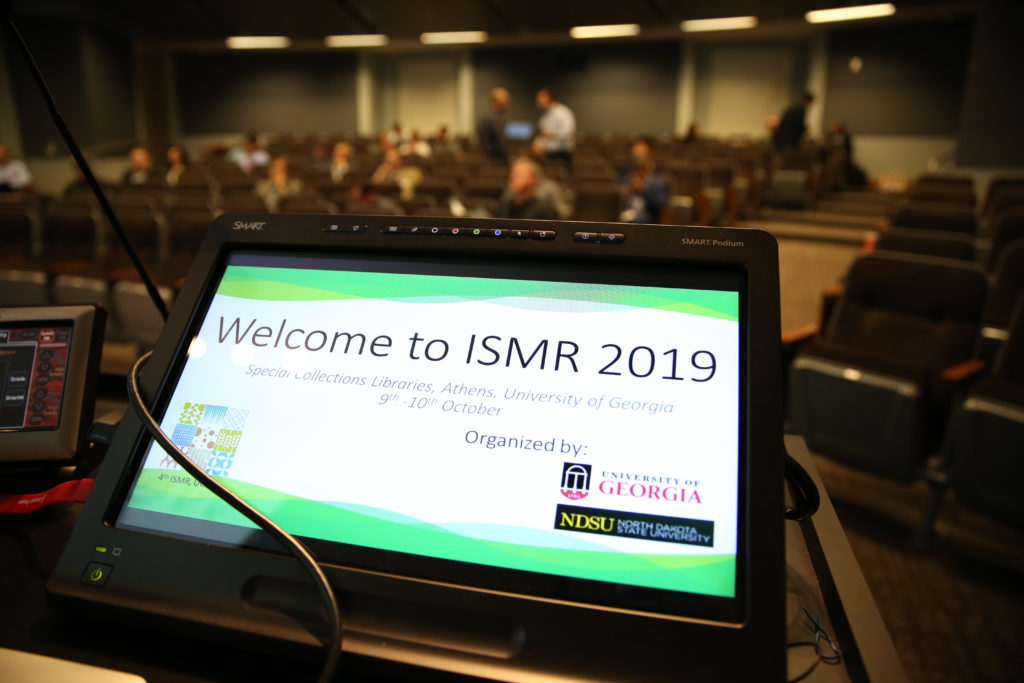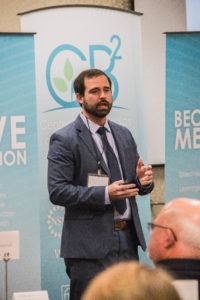Renewable solutions for future materials featured at symposium held at UGA

The 4th International Symposium on Materials from Renewables drew scientists from throughout the U.S. and Europe to UGA, to share successes and challenges from their explorations into creating materials from renewable sources. The two-day meeting, co-hosted by the UGA Department of Textiles, Merchandising and Interiors and New Materials Institute, featured advances in renewable materials science that may eventually benefit a broad swath of industry, from single-use plastics, to the transportation and building sectors, to biomedical and textiles, to energy.
“An increased interest, by industry and academia, in research and commercialization of renewable and compostable plastics demonstrates the need for professionals in this field to freely exchange and discuss ideas,” said Sergiy Minko, the Georgia Power Professor of Fiber and Polymer Science at the University of Georgia, who co-founded ISMR with faculty from North Dakota State University. The annual event aims to spur collaborative research and engineering efforts toward solving problems with materials currently in use.
Focus is close to home
Much of the research presented focused on utilizing renewable sources that are plentiful in a researcher’s home state or region. For example, many projects featured polymers extracted from or developed from agricultural byproducts, like rice straw, corn stover, plant-based oils or other materials—including utilizing keratin from chicken feathers.
There are numerous sources available for renewable polymers, said Minko. Utilizing byproducts from industry can add value to local resources and thus to local economies.
“This is important for Georgia, for example, with its long history of paper and textile industries and also intensive agriculture,” said Minko. “Byproducts from these industries could be transferred into valuable sources for environmentally-friendly materials.”
Plants and their byproducts offer three of the most abundant natural resources on Earth: cellulose, lignin and xylan. All three were discussed by scientists at the meeting. Cellulose has been used by industry for a long time and multiple researchers shared their explorations into new ways to utilize cellulose in the creation of materials. Xylan is another abundant polysaccharide that is present in many agricultural side and forest products, and is being researched as a potential polymer and chemicals source. Lignin, a byproduct of the paper industry and agriculture, is a naturally existing polymer that is being explored.
Adding value at the design stage
Presenters also discussed ongoing research to upcycle existing polymers—by creating them intentionally to have additional value following their initial life cycle, which encourages recycling—and also to improve upon existing polymers. For example, polylactic acid, or PLA, is a starch-based polymer that has been in use for about 15 years. It is completely degradable in an industrial compost setting, but not in cold ocean water. Some scientists are trying to alter PLA-based materials so that they break down in ocean water.
Graduate students, representing multiple universities, presented research posters and three winners were recognized. Scott Tull, from the Locklin Group in the New Materials Institute, took first place for “Waterborne Polyhydroxyalkanoate Colloidal Dispersions: A Sustainable Replacement for Single Use Plastic Coatings.” Jamie P. Wooding, from Georgia Institute of Technology, placed second for “Modifying Interfacial Chemistry of Cellulose-Reinforced Epoxy Composites Using Atomic Layer Deposition (ALD).” And, Mastooreh Seyedi, of Clemson University, placed third for “Coloring Fabrics Using Dye-Embedded Cellulose Nanofibrils.”
The October conference was co-organized by faculty from UGA, North Dakota State University, and Institut Charles Gerhardt, in France, and held at the UGA Special Collections Libraries. Support was provided by the UGA College of Family and Consumer Sciences, its Department of Textiles, Merchandising and Interiors; the Franklin College of Arts and Sciences; the College of Engineering; the New Material Institute, and the Office Of Research.

